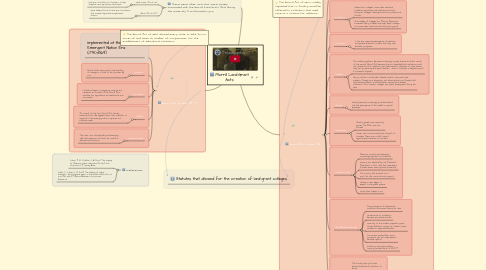
1. Morrill Act of 1862
1.1. Implemented at the end of the Emergent Nation Era (1790-1869).
1.2. Institutions
1.2.1. Morrill funds were used in the founding of colleges in a total of thirty states by 1900.
1.3. Curriculum
1.3.1. Institutions began to emphasize science and research as a result of the Morrill Act's mandate for agriculture and mechanical arts curriculum.
1.4. Faculty
1.4.1. As a result of the first Morrill Act, faculty research had to be applied rather than scientific to respond to the emerging nation's agrarian and industrial needs.
1.5. Societal Context
1.5.1. The nation was still expanding and emerging. With that expansion, land was set aside for educational institutions.
2. Statutes that allowed for the creation of land-grant colleges.
3. References
3.1. Cohen, A. M. & Kisker, C. B. (2010). The shaping of American higher education (2nd ed.). San Francisco, CA: Jossey-Bass.
3.2. Goldin, C., & Katz, L. F. (1998). The shaping of higher education: the formative years in the United States, 1890 to 1940 (No. w6537). National Bureau of Economic Research.
4. The Morrill Act of 1862 allowed every state to take 30,000 acres of land times its number of congressmen for the establishment of educational institutions.
5. There were other acts that were closely associated with the Morrill Land-Grant Acts during the University Transformation Era.
5.1. Smith-Lever Act of 1914
5.1.1. Provided extension services to connect land-grant institutions to farmers to help disperse new agriculture techniques.
5.2. Hatch Act of 1887
5.2.1. Gave federal funds to land-grant institutions that created agriculture experiment stations.
6. Morrill Act of 1890
6.1. Implemented near the beginning of the University Transformation Era (1870-1944).
6.2. Institutions
6.2.1. Liberal arts colleges, universities, technical institutes, agriculture and mechanical schools, land-grant colleges, theological schools, professional schools
6.2.2. The number of colleges for African Americans increased. Many notable historically black colleges and universities were founded during this period.
6.3. Curriculum
6.3.1. In this era came the emergence of electives and general education criteria and many new bachelor programs.
6.4. Students
6.4.1. The student population became increasingly racially diverse as direct result of the second Morrill Act, because the act stipulated that institutions could not receive funds if admission was determined on the basis of race (unless they set up separate but equal facilities - which, in hindsight, is depressing and ill-conceived loophole).
6.4.2. Many institutions would admit female students along with male students. Though most educators and administrators and families felt that female students would be better served at all-female institutions. Thus, women's colleges saw great development during this time.
6.5. Faculty
6.5.1. Faculty became increasingly professionalized with the emergence of the "publish or perish" paradigm,.
6.6. Governance
6.6.1. Faculty gained some governing power. The AAUP was also formed.
6.6.2. Power was concentrated with a board of trustees. There was a shift toward appointing businessmen as trustees.
6.7. Societal Context
6.7.1. American society was becoming increasingly agrarian and industrial.
6.7.2. Slavery was abolished by the Thirteenth Amendment in 1865. With that amendment former slaves were granted citizenship.
6.7.3. The country had entered into a post-Civil War reconstruction period.
6.7.4. Women's roles began to expand to the public sphere.
6.7.5. World War 1 began in 1914
6.8. Most Notable Outcomes:
6.8.1. The prominence of educational institutions blossomed during this time.
6.8.2. Governance of institutions became more business-like.
6.8.3. Diversity of the student population grew, though different groups of students were annexed to separate facilities.
6.8.4. Curriculum evolved (e.g., more programs, gen. ed. requirements, elective options).
6.8.5. Institutions served as military training facilities (birth of ROTC?).
6.9. Finance
6.9.1. The funding during this time allowed educational institutions to boom.
6.9.2. The Morrill Acts offered public funds.
6.9.3. Emphasis was placed on fundraising efforts.
6.9.4. Tuition increased.
